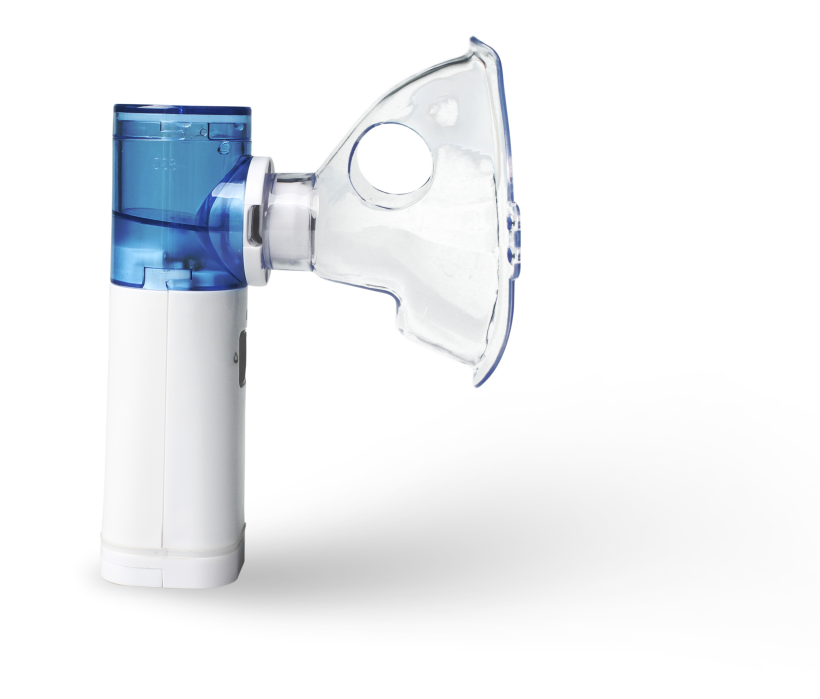Mesh nebulizers are game-changers in respiratory care, delivering medicine as a mist for easy breathing. These devices are crucial in treating asthma and COPD, using advanced tech for people of all ages. Let’s explore different types and why mesh nebulizers are vital for better respiratory health.

Importance of choosing the right type of mesh nebulizer machine
Selecting the appropriate mesh nebulizer machine is crucial for effective respiratory therapy. Mesh nebulizers, designed to convert liquid medication into a fine mist for inhalation, come in various types. Each type offers distinct features impacting treatment outcomes and user experience. Opting for the right one ensures optimal respiratory care.
Firstly, consider the particle size generated by the nebulizer. The size influences how effectively the medication reaches the lungs, aiding in better absorption and treatment. Moreover, portability matters, especially for individuals requiring treatment on the go. A compact, lightweight design facilitates easy handling and travel convenience.
Noise levels are another significant consideration. Quiet operation ensures comfort during therapy sessions, allowing users to relax and breathe comfortably. Additionally, battery life is crucial, particularly for portable nebulizers. Long-lasting batteries ensure uninterrupted treatment, whether at home or outdoors.
When comparing brands and models, user reviews and feedback play a pivotal role. Insights from other users provide valuable information about reliability, durability, and overall performance. Cost considerations also come into play. While affordability is important, prioritize value and quality to ensure long-term satisfaction and efficacy.
Types of Mesh Nebulizer Machine
The different types of mesh nebulizer machines and delve into the pros and cons of each below.
1. Vibrating Mesh Nebulizers
Pros
Vibrating mesh nebulizers employ a vibrating membrane to aerosolize medication into a fine mist. They are known for producing consistently small particle sizes, ensuring efficient drug delivery to the lungs. These nebulizers are also compact and portable, making them suitable for on-the-go use. Additionally, vibrating mesh technology allows for silent operation, enhancing the user experience.
Cons
Despite their advantages, vibrating mesh nebulizers can be relatively expensive compared to other types. Maintenance might pose a challenge, as the mesh membrane requires delicate care to prevent damage. Users should follow strict cleaning guidelines to ensure optimal performance and longevity.
2. Ultrasonic Mesh Nebulizers
Pros
Ultrasonic mesh nebulizers utilize ultrasonic waves to break down liquid medication into a fine mist. They are known for their rapid nebulization process, providing quick relief to users. These nebulizers are generally compact and lightweight, making them suitable for both home and travel use. Ultrasonic mesh nebulizers are often battery-operated, offering flexibility in treatment location.
Cons
One drawback of ultrasonic mesh nebulizers is the potential for noise during operation. While advancements have minimized this issue, some users may find the humming sound distracting. Additionally, like vibrating mesh nebulizers, ultrasonic models can be relatively expensive. Careful maintenance to prevent mineral buildup is crucial for optimal performance.
3. Static Mesh Nebulizers
Pros
Static mesh nebulizers utilize a static mesh or perforated plate to generate aerosol. They are appreciated for their simplicity, making them user-friendly for individuals of all ages. These nebulizers are often more affordable than other types, making them accessible to a broader user base. Static mesh technology also allows for efficient nebulization at lower medication volumes.
Cons
While static mesh nebulizers are cost-effective, they may produce larger particle sizes compared to their vibrating and ultrasonic counterparts. This could impact the effectiveness of the medication reaching the lower respiratory tract. Additionally, some users may find static mesh nebulizers bulkier than other portable options.
4. Micro-Pump Mesh Nebulizers
Pros
Micro-pump mesh nebulizers incorporate a micro-pump mechanism to generate aerosol. They are known for their precise control over nebulization rates, ensuring accurate medication delivery. These nebulizers often have adjustable settings, allowing users to customize their treatment based on individual needs. Micro-pump technology contributes to efficient drug utilization.
Cons
One drawback of micro-pump mesh nebulizers is their potential complexity, which might be intimidating for some users. The intricate design may require careful handling and maintenance. Additionally, these nebulizers may be on the higher end of the price spectrum. Users must balance the advanced features with their comfort level and budget.
Criteria for Evaluating Mesh Nebulizer Machines

Mesh nebulizer machines play a crucial role in respiratory therapy, delivering medication in a fine mist for effective inhalation. When choosing the right device, several key criteria should be considered to ensure optimal treatment outcomes and user satisfaction.
A. Particle Size
Importance of Particle Size in Aerosol Therapy
In aerosol therapy, the size of particles matters significantly. Smaller particles penetrate deeper into the lungs, reaching the lower respiratory tract where medication is most effective. Optimal particle size ensures maximum absorption and therapeutic benefits.
Optimal Particle Size for Effective Treatment
The ideal particle size for mesh nebulizer machines typically ranges between 1 to 5 micrometres. This range allows for efficient deposition in the lungs, balancing the need for fine particles with the practicalities of aerosol delivery.
B. Portability and Size
Considerations for Home Use and Travel
Mesh nebulizers come in various sizes, and considering the intended use is crucial. Home users may prioritize larger, feature-rich devices, while frequent travelers benefit from compact, portable options. Assessing lifestyle needs ensures seamless integration into daily routines.
Compact Design and Ease of Handling
User-friendliness is paramount. A mesh nebulizer with a compact design is easier to handle and store. Intuitive controls and straightforward assembly contribute to a positive user experience, especially for those with varying levels of technological familiarity.
C. Noise Level
Impact of Noise on User Experience
Noise during nebulization can impact the overall user experience. A quieter operation promotes relaxation and comfort during treatment. Users, especially children or those with sensitivity to noise, benefit from a mesh nebulizer with minimal sound disturbance.
Desirable Noise Levels for Mesh Nebulizers
Ideally, mesh nebulizers should operate quietly, with noise levels ranging from 25 to 40 decibels. This range ensures a peaceful environment during treatment, fostering compliance and reducing potential stress associated with the nebulization process.
D. Battery Life and Power Source
Importance of Battery Life in Portable Nebulizers
For users requiring mobility, battery life is a critical consideration. Portable mesh nebulizers should offer sufficient battery capacity to accommodate multiple treatments without constant recharging. This feature ensures uninterrupted therapy, whether at home or on the go.
Options for Power Sources
Mesh nebulizers typically use rechargeable batteries, USB ports, or traditional power outlets. The versatility of power sources enhances convenience, allowing users to choose the most suitable option based on their environment. USB compatibility, in particular, provides flexibility for charging on the move.
Заключительные слова
Mesh nebulizers are crucial for respiratory well-being. Their ability to create fine aerosols, with portability and optimal particle size, ensures effective treatment. Mesh nebulizers play an unmatched role in respiratory care, offering comfort, convenience,andtargeted therapy at home or on the go, promoting a healthier future.
 Профессиональный поставщик медицинского оборудования
Профессиональный поставщик медицинского оборудования
